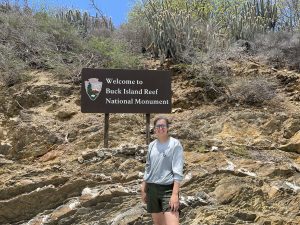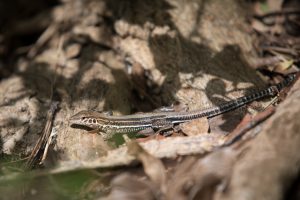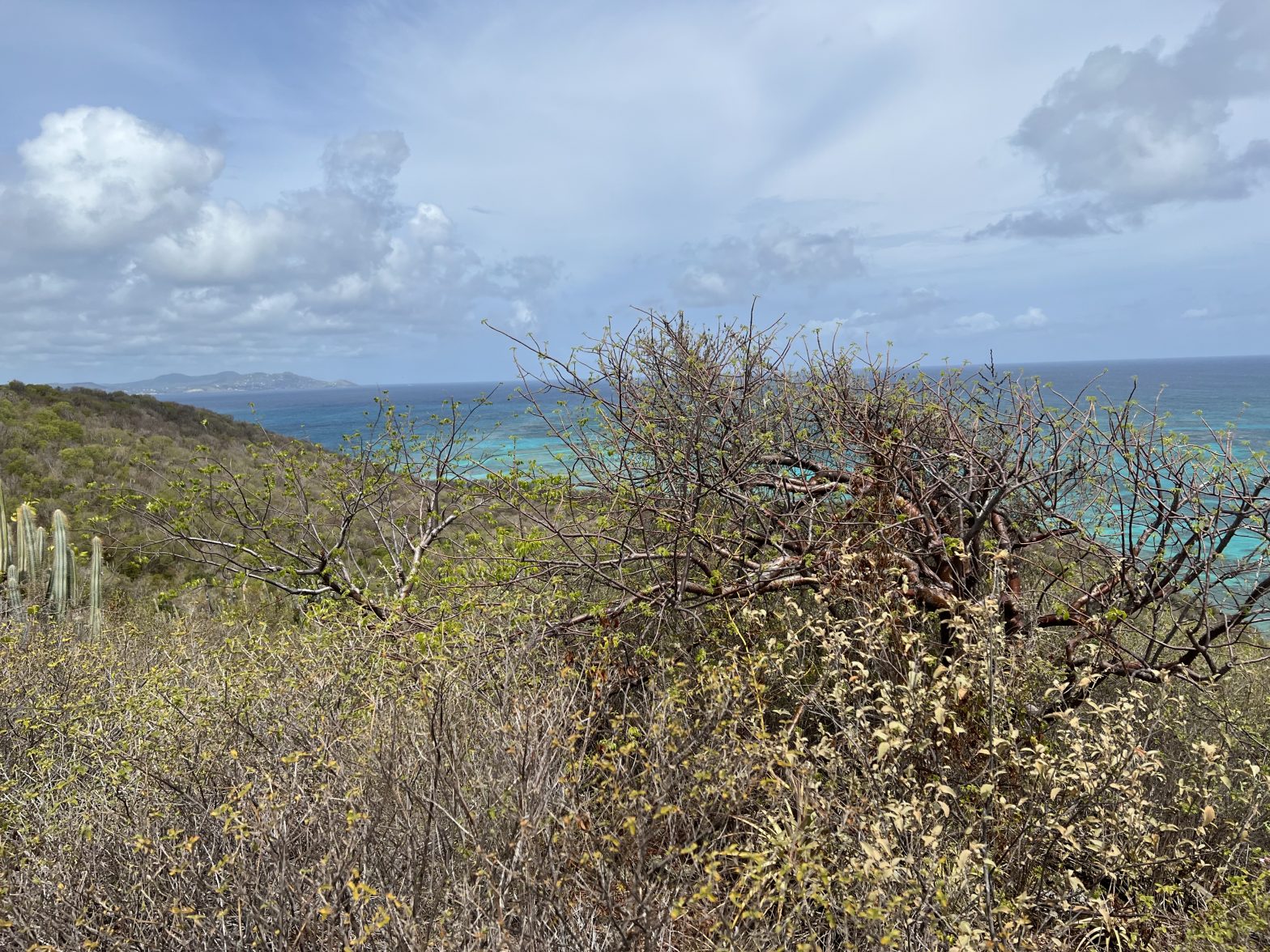
It’s been over a month since I moved to beautiful St. Croix, USVI and I’ve had a great time diving into data and fieldwork! I am currently a PhD student at Texas A&M University where I study Ecology and Evolutionary Biology, though I primarily identify as a herpetologist (someone who researches reptiles and amphibians). For both my doctoral work and my Scientists in Parks internship, I am focusing on the St. Croix ground lizard (Ameiva polops) which is a small, striped lizard in the family Teiidae (the group containing the whiptails, racerunners, and tegus).
Although it only covers 82 square miles, St. Croix is a remarkably diverse place with steep hills alongside beaches and ecosystems ranging from desert to rainforest. However, much of the island was converted to agricultural fields in the 1800s for the production and processing of sugarcane. The sugar industry is now nearly nonexistent on St. Croix but the effects on people, culture, infrastructure, and the ecosystem persist. For example, farmers imported small Indian mongoose (Herpestes aeropunctatus) to control rat populations. These mongooses failed to eliminate the rats but along with the surviving rats, cats, and other introduced mammalian predators they extirpated the endemic St. Croix ground lizard. The last recorded sighting on mainland St. Croix was in the 1960s.

But it’s not all doom and gloom for these lizards! Despite eradication on mainland St. Croix, small populations were able to survive on two offshore cays (pronounced “keys”): Protestant Cay and Green Cay. In 1990, a number of A. polops were moved from Protestant Cay to Ruth Cay and a similar translocation occurred in 2008 from Green Cay to Buck Island to expand their range. Today, St. Croix ground lizards continue to thrive on all four of these smaller islands and an experimental reintroduction in February brought them back to the mainland for the first time in decades.
This summer I am continuing the work on the Buck Island population of A. polops by updating existing models of where they live and of their (much higher!) current population size. I will also be gathering additional data, working on public outreach projects, and progressing on my dissertation work.
Stay tuned for updates as the summer continues!

